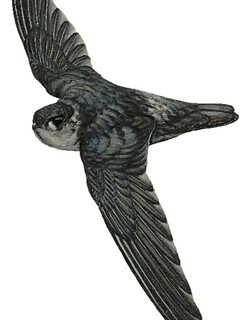Principe Thrush / Turdus xanthorhynchus

Principe Thrush
SCI Name:
Protonym: Turdus xanthorhynchus Boll.Mus.Zool.Anat.Comp.Torino 15 (362) p. 2
Taxonomy: Passeriformes / Turdidae / Turdus
Taxonomy Code: prithr1
Type Locality: Principe.
Author: Salvadori
Publish Year: 1901
IUCN Status: Critically Endangered
DEFINITIONS
TURDUS
(Turdidae; Ϯ Mistle Thrush T. viscivorus) L. turdus thrush; "95. TURDUS. Rostrum tereti-cultratum, maxilla superiore apice deflexo. Nares nudæ, superne membranula semitectæ. Lingua lacero-emarginata." (Linnaeus 1758); "Turdus Linnaeus, 1758, Syst. Nat., ed. 10, 1, p. 168. Type, by subsequent designation (Gray, 1840, List Gen. Birds, p. 27), Turdus viscivorus Linnaeus." (Ripley in Peters 1964, X, 177). Linnaeus's Turdus comprised sixteen species (T. viscivorus, T. pilaris, T. iliacus, T. musicus, T. Canorus, T. rufus, T. polyglottos, T. Orpheus, T. plumbeus, T. crinitus, T. roseus, T. Merula, T. torquatus, T. solitarius, T. arundinaceus, T. virens).
Var. Turus, Trudus, Turtus, Curdus.
Synon. Afrocichla, Arceuthornis, Cichlherminia, Cichloides, Cichloselys, Copsichus, Copsicus, Cossyphopsis, Galeoscoptes, Haplocichla, Hodoiporus, Iliacus, Ixocossyphus, Lamprophonus, Melizocincla, Meridiocichla, Merula, Merulissima, Mimocichla, Mimokitta, Nesocichla, Peliocichla, Petrocincla, Planesticus, Platycichla, Semimerula, Thoracocincla, Turdela, Turdicus.
turdus
L. turdus thrush.
● ex “Grivetin” of Levaillant 1802, pl. 118 < French Grive thrush (syn. Erythropygia leucophrys).
● "89. Loxia Turdus F. ... Habitat in insula australi Novae Zeeelandiae, simillima Turdo, statura, colore, pedibus. Corpus magnitudine Turdi viscivori, supra fuscum." (Forster 1844) (syn. Turnagra capensis).
xanthorhynchus
Gr. ξανθος xanthos yellow; ῥυγχος rhunkhos bill.
Xanthorhynchus
(syn. Tockus Ϯ Southern Yellow-billed Hornbill T. leucomelas) Gr. ξανθος xanthos yellow; ῥυγχος rhunkhos bill; "Xanthorhynchus gen. nov., type Buceros leucomelas Licht.: bill very long, conspicuously and evenly arching, normally not toothed, though sometimes slightly chipped; length of the culmen about two and a half times the height at the nostrils; casque forming a high ridge, evenly arching with the bill, from which it is marked off by a shallow groove extending to a point not far from the tip; wing and tail of about the same length; secondaries as long as the primaries." (A. Roberts 1922).
UPPERCASE: current genus
Uppercase first letter: generic synonym
● and ● See: generic homonyms
lowercase: species and subspecies
●: early names, variants, mispellings
‡: extinct
†: type species
Gr.: ancient Greek
L.: Latin
<: derived from
syn: synonym of
/: separates historical and modern geographic names
ex: based on
TL: type locality
OD: original diagnosis (genus) or original description (species)












